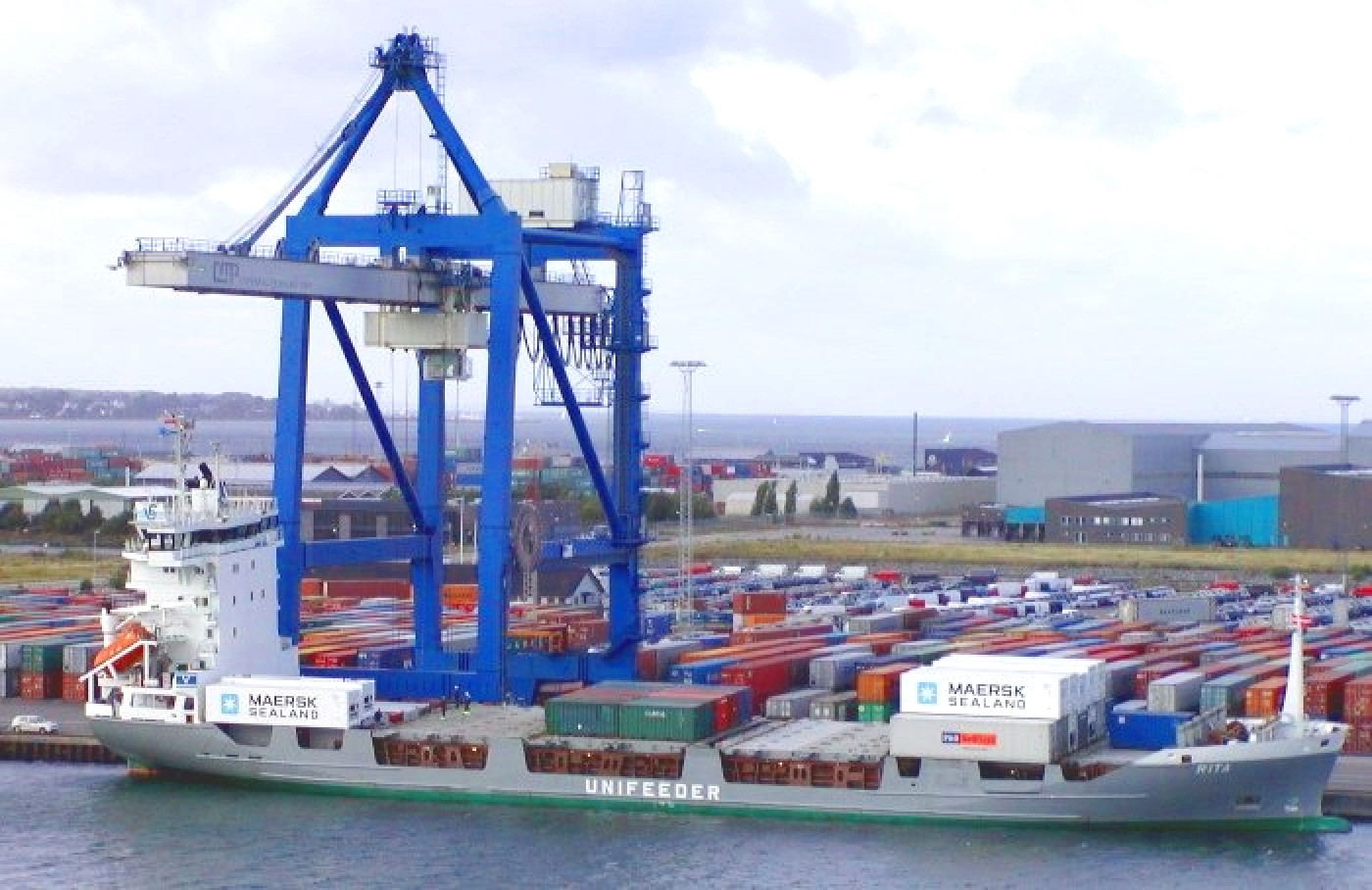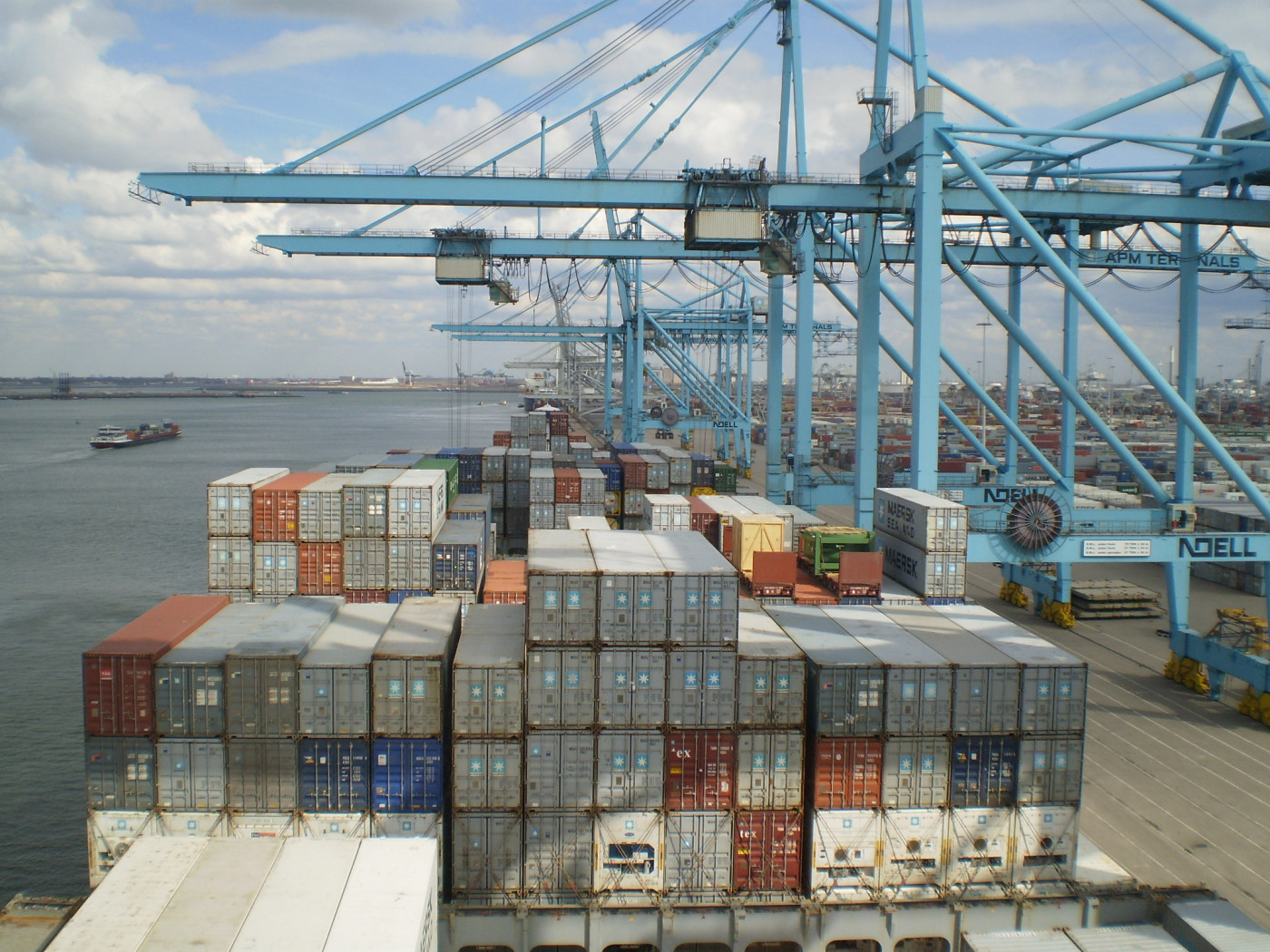Sunday, December 20 2020
This December, the Lloyd's Register Foundation remotely hosted three students from the University of Oxford for micro-internships. Over the five-day placements, they used HEC's digital collections to conduct a rapid literature review focusing on one of the Foundation’s big challenge areas - such as safety at sea and safety for a sustainable future. Aside from blogs, the micro-interns have produced social media posts from their research. In this blog, we learn more about Hamish Low's research on containerisation.
Decarbonisation is undoubtedly one of the key challenges for the shipping industry. As climate change increasingly becomes the central issue of our age, global shipping, accounting for some 2.5 per cent of global greenhouse gas emissions, needs to respond. The most recent International Maritime Organisation (IMO) study does not make encouraging reading. Emissions rose by 6 per cent from 2012 to 2018 as trade demand ran ahead of efforts at decarbonisation, faster action is needed for the industry to meet the IMO target of a at least 50 per cent reduction in emissions by 2050.
This is a daunting task, though there is scope for improved fuel efficiency as the most immediate response, in the longer term the adoption of low-carbon and zero-carbon technology will be critical.
Luckily the shipping industry is far from unfamiliar with profound technological changes. Whether the transition from sail to steam in the 19th century or the rise of mass manufacture during the Second World War as ‘Liberty Ships’ staved off the U-Boat menace and greatly aided the postwar revival of the global merchant marine. The successes, failures, foresight and folly of those that came before can teach us a great deal about how we should respond to the challenge of decarbonisation.

Perhaps the closest analogy to the kind of systemic change demanded by decarbonisation is that of containerisation. From Malcolm McLean pioneering the modern container in the mid 1950s, to official international standardisation in 1968, to the near complete eclipse of the general cargo ship by the end of the 1970s, the ascendency of the container was meteoric. Containerisation fed off huge economies of scale to remake not only the shipping industry but to transform global logistic networks and fuel an unprecedented level of globalisation. Containerisation gave rise to an ongoing process of technological development with the ever-growing size of container ships, expanding ports to handle this growing volume and the development of increasingly complex digital systems to maximise cost reductions within integrated logistic networks.
The move towards ever larger container ships brought a host of technical issues in ensuring that these new behemoths could transport both their crew and cargo safely. Engineering research and innovation brought solutions to issues of ship balance or container lashing, but these had to be disseminated throughout the industry. Cooperation and knowledge sharing through international organisations, classification societies, professional networks and state and port authorities was crucial to the global rise of containerisation. Disasters do still happen however, and fundamental changes to ship fuel and propulsion will need these same networks to be deepened and extended if the transition is to be both fast enough while not discounting safety.
These networks must also be adapted to one of the outstanding changes in the shipping industry since the beginning of containerisation - the centre of gravity of moving to East Asia. Shipbuilding was key to the industrialisation of in turn the Japanese, South Korean and Chinese economies, while declining precipitously in the deindustrialising economies of the West such that the majority of ships now emerge from East Asian shipyards. The processes of technology and skills sharing that enabled this growth can inform how we roll out similar processes for decarbonisation on a global scale.

Absolutely central to any successful decarbonisation will be China. From 1982, early in China’s process of economic liberalisation, the Chinese Society of Naval Architecture and Marine Engineering began publishing an English language annual on Chinese shipbuilding to inform those outside of China. China’s shipbuilding industry emerged through partnership with foreign firms and assistance from organisations such as Lloyd’s Register but this annual demonstrates how it was not a one-way trade. It is this spirit of two-way engagement and cooperation that will be vital to successful decarbonisation. Such cooperation, especially with China, may face growing headwinds in the coming years yet the maritime world has one of the longest histories of international cooperation and decarbonisation provides a powerful common framework and goal.
The experience of containerisation also teaches us that the human aspect must not be lost in the storm of technological transition. The move to cranes and containers changed the balance between labour and capital within ports almost overnight threatening the employment of a huge number of dock workers. The introduction of containers through the late 60s and 70s fuelled industrial disputes and placed major strain on labour markets. Policy responses varied a great deal between countries and over time and there is significant scope to learn from this experience. A systemic change such as decarbonisation will undoubtedly affect labour in profound ways in terms of the skills, tasks and role demanded of it and managing this process both effectively and safely will be a crucial challenge.
Adopting a hindsight perspective can be an invaluable tool to enable us to look at challenges such as decarbonisation in a different light. By learning from previous transitions such as containerisation we can ensure that we have truly learned the correct lessons and use these to move towards a greener and safer future.
Disclaimer: The views and opinions expressed in this blog are those of the author and do not necessarily represent those of the Lloyd’s Register Group or Lloyd’s Register Foundation.

